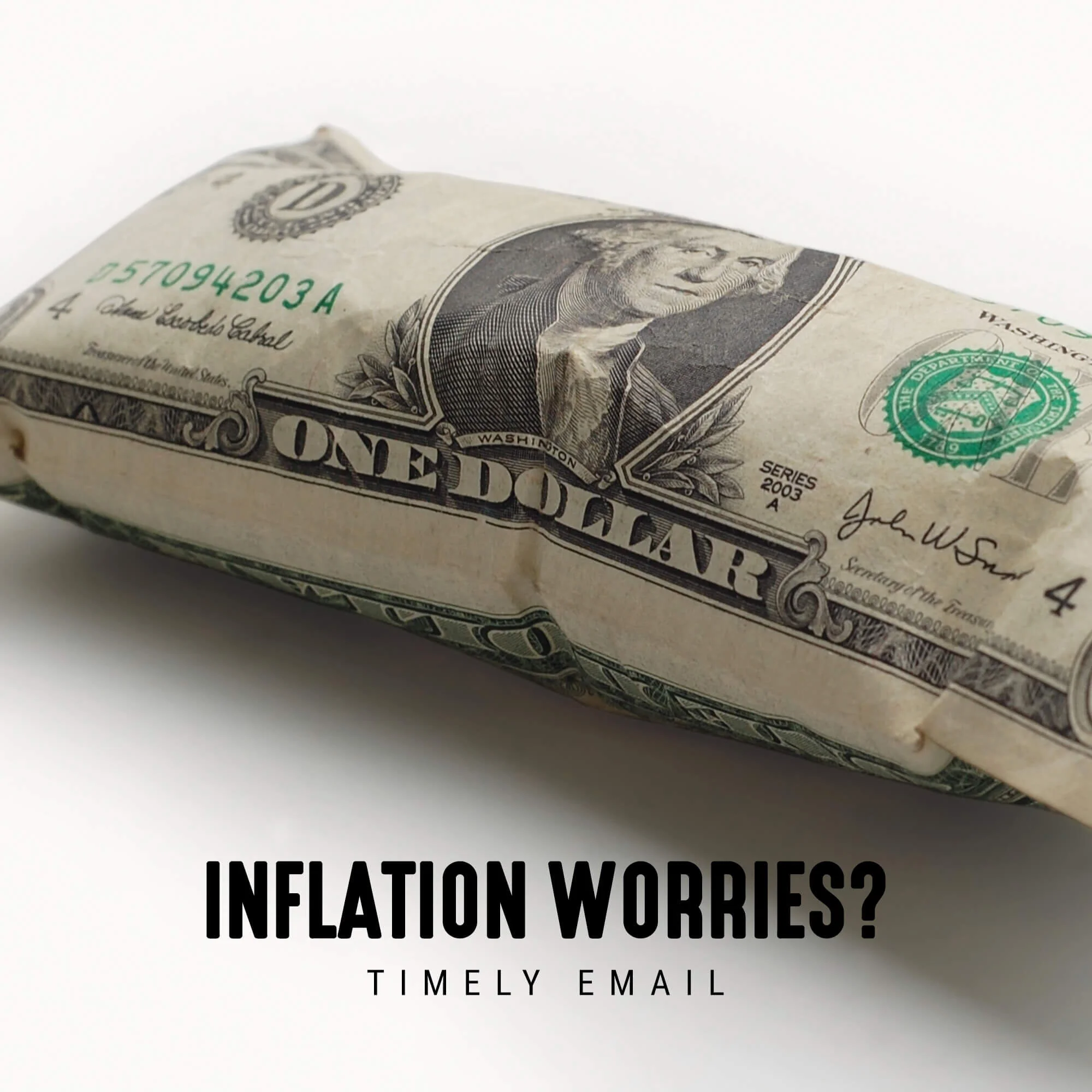The year-end holidays approach and bring lots of things to do. Yet with holiday cheer there are financial plans to make, too.
Consider these financial opportunities before 2022 arrives.
MAKE FINANCIAL GIFTS
As we count our many blessings and share time with our loved ones, we can express our thanks through giving to others. Donate to your favorite charity before year-end.
Generally speaking, the amount of charitable cash contributions taxpayers can deduct on Schedule A as an itemized deduction is limited to a percentage (usually 60%) of the taxpayer's adjusted gross income. But did you know that the IRS has temporarily suspended limits on charitable contributions?
Sure it might change, but as of now, qualified contributions are not subject to this limitation and individuals may deduct qualified contributions of up to 100% of their adjusted gross income.
To qualify, the contribution must be a cash contribution and made to a qualifying organization. Contributions of non–cash property do not qualify for this relief. Taxpayers may still claim non–cash contributions as a deduction, subject to the normal limits.
You can gift assets or cash to your child, any relative, or even a friend, and take advantage of the annual gift tax exclusion. Any individual can gift up to $15,000 this year to as many other individuals as he or she desires a couple may jointly gift up to $30,000. Whether you choose to gift singly or jointly, you've probably got a long way to go before using up the current $11.7 ($23.4 million for couples) lifetime exemption.
Grandparents, aunts, uncles, and parents too can fund 529 college saving plans this way, but it is worth noting that December 31st is the 529 funding deadline.
MAX OUT RETIREMENT PLANS
Most employers offer a 401(k) or 403(b) plan, and you have until December 31st to boost your contribution. This year, the contribution limit on both 401(k) and 403(b) plans is $19,500 for those under 50 (it's going up by $1,000 next year) and $26,000 for those 50 and older. This year, the traditional and Roth individual retirement account contribution limits are $6,000 for those under 50 and $7,000 for those 50 and older.
But be careful because high earners face contribution ceilings based on their adjusted gross income level.
Remember IRA cash-outs. Once you reach age 72 you are required to take annual Required Minimum Distributions (RMDs) from your retirement accounts.
Your first RMD must be taken by April 1st of the year after you turn 72. Subsequent RMDs must be taken by December 31st of each year. If you don't take your RMD, you'll have to pay a penalty of 50% of the RMD amount.
Did you inherit an IRA? If you have and you weren't married to the person who started that IRA, you must take the first RMD from that IRA by December 31st of the year after the death of that original IRA owner. You have to do it whether the account is a traditional or a Roth IRA.
Consider dividing it into multiple inherited IRAs, thus extending the payout schedule for younger inheritors of those assets. Any co–beneficiaries receive distributions per the life expectancy of the oldest beneficiary. If you want to make this move, it must be done by the end of the year that follows the year in which the original IRA owner died.
If your spouse died, then, you should file Form 706 no later than nine months after his or her passing. This notifies the IRS that some or all of a decedent's estate tax exemption is carried over to the surviving spouse.
Business owners' retirement plans. If you have income from self-employment, you can save for the future using a self-directed retirement plan, such as a Simplified Employee Pension (SEP) plan or a one–person 401(k), the so-called Solo (k). You don't have to be exclusively self–employed to set one of these up – you can work full–time for someone else and contribute to one of these while also deferring some of your salary into the retirement plan sponsored by your employer.
Contributions to SEPs and Solo (k) s are tax–deductible. December 31st is the deadline to set one up, and if you meet that deadline, you can make your contributions as late as April 15th next year (or October 15th with a federal extension).
You can contribute up to $58,000 to a SEP and this rises to $61,000 next year.
If you contribute to a 401(k) at work, the sum of your employee salary deferrals plus your Solo (k) contributions can't be greater than the $19,500/$26,000 limits. But even so, you can still pour up to 25% of your net self-employment income into a Solo (k).
IRS INCREASES CONTRIBUTION LIMITS FOR NEXT YEAR
The Internal Revenue Service announced that the amount individuals can contribute to their 401(k) plans in 2022 has increased to $20,500, up from $19,500 for 2021 and 2020.
From the IRS website:
Highlights of Changes for 2022
"The contribution limit for employees who participate in 401(k), 403(b), most 457 plans, and the federal government's Thrift Savings Plan is increased to $20,500, up from $19,500. The income ranges for determining eligibility to make deductible contributions to traditional Individual Retirement Arrangements (IRAs), to contribute to Roth IRAs, and to claim the Saver's Credit all increased for 2022.
Taxpayers can deduct contributions to a traditional IRA if they meet certain conditions. If during the year either the taxpayer or the taxpayer's spouse was covered by a retirement plan at work, the deduction may be reduced, or phased out, until it is eliminated, depending on filing status and income. (If neither the taxpayer nor the spouse is covered by a retirement plan at work, the phase–outs of the deduction do not apply.) Here are the phase–out ranges for 2022:
For single taxpayers covered by a workplace retirement plan, the phase–out range is increased to $68,000 to $78,000, up from $66,000 to $76,000.
For married couples filing jointly, if the spouse making the IRA contribution is covered by a workplace retirement plan, the phase–out range is increased to $109,000 to $129,000, up from $105,000 to $125,000.
For an IRA contributor who is not covered by a workplace retirement plan and is married to someone who is covered, the phase–out range is increased to $204,000 to $214,000, up from $198,000 to $208,000.
For a married individual filing a separate return who is covered by a workplace retirement plan, the phase–out range is not subject to an annual cost–of–living adjustment and remains $0 to $10,000.
The income phase–out range for taxpayers making contributions to a Roth IRA is increased to $129,000 to $144,000 for singles and heads of household, up from $125,000 to $140,000. For married couples filing jointly, the income phase-out range is increased to $204,000 to $214,000, up from $198,000 to $208,000. The phase–out range for a married individual filing a separate return who makes contributions to a Roth IRA is not subject to an annual cost–of–living adjustment and remains $0 to $10,000.
The income limit for the Saver's Credit (also known as the Retirement Savings Contributions Credit) for low- and moderate–income workers is $68,000 for married couples filing jointly, up from $66,000; $51,000 for heads of household, up from $49,500; and $34,000 for singles and married individuals filing separately, up from $33,000.
The amount individuals can contribute to their SIMPLE retirement accounts is increased to $14,000, up from $13,500.
Key Employee Contribution Limits That Remain Unchanged
The limit on annual contributions to an IRA remains unchanged at $6,000. The IRA catch–up contribution limit for individuals aged 50 and over is not subject to an annual cost–of–living adjustment and remains $1,000.
The catch-up contribution limit for employees aged 50 and over who participate in 401(k), 403(b), most 457 plans, and the federal government's Thrift Savings Plan remains unchanged at $6,500. Therefore, participants in 401(k), 403(b), most 457 plans, and the federal government's Thrift Savings Plan who are 50 and older can contribute up to $27,000, starting in 2022. The catch–up contribution limit for employees aged 50 and over who participate in SIMPLE plans remains unchanged at $3,000."









